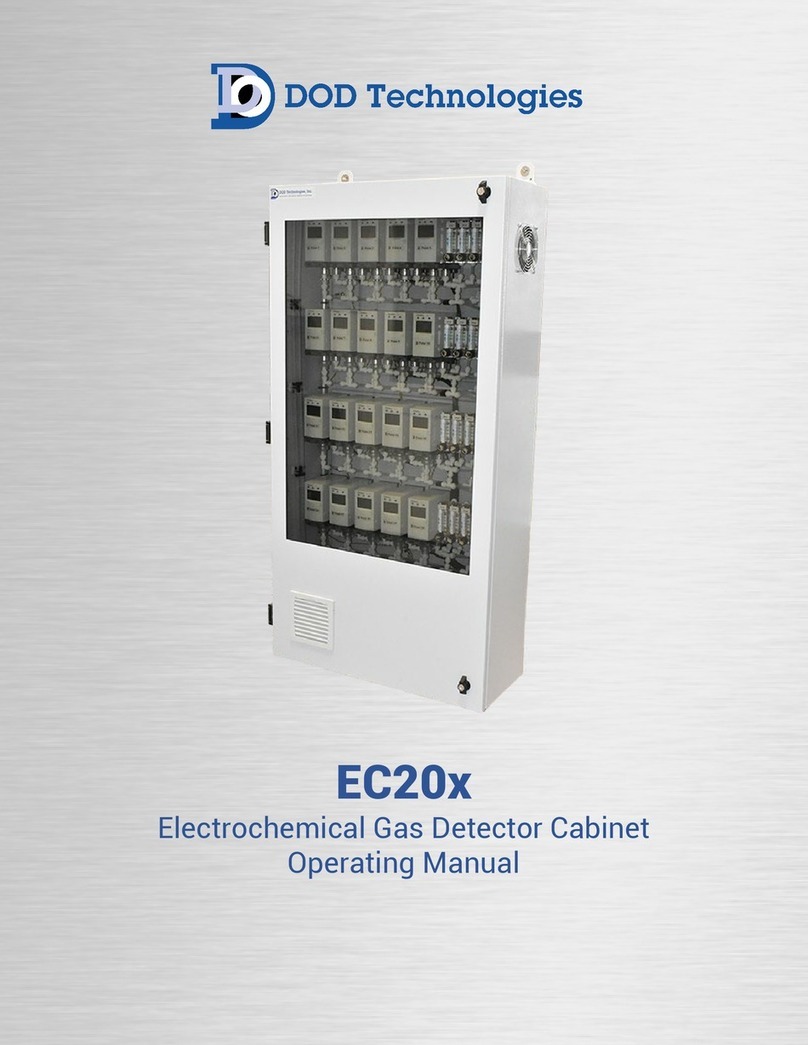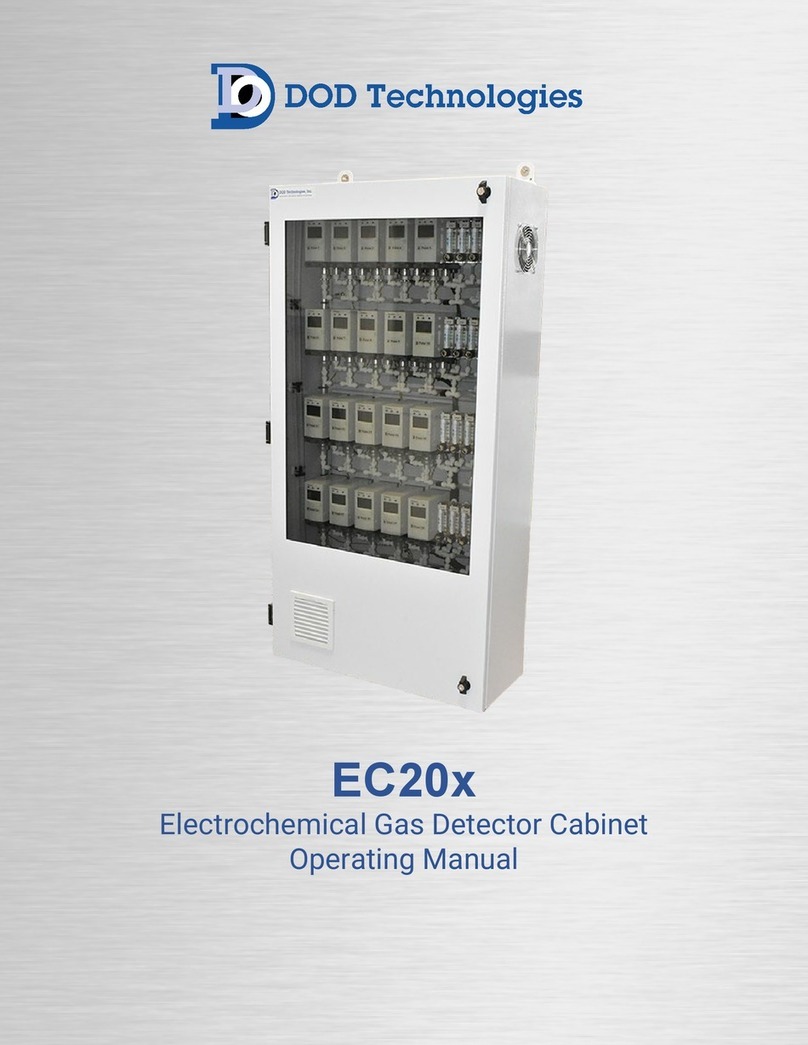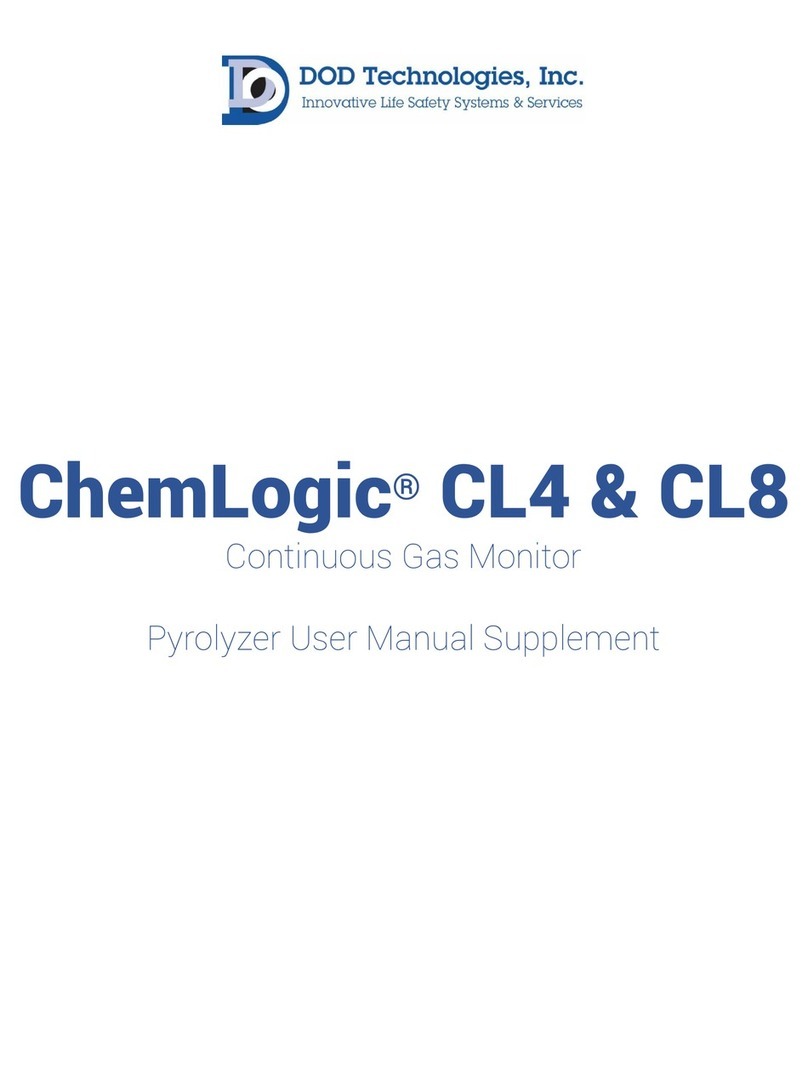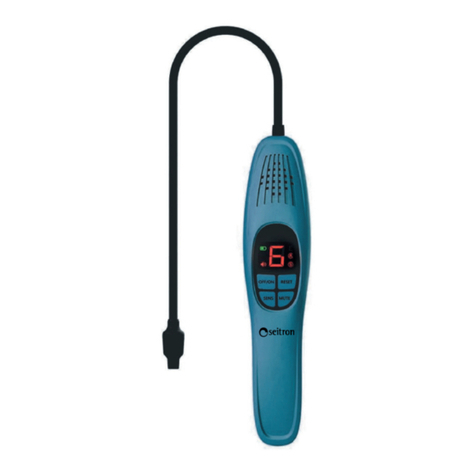
DC-ITD-CLM4MAN_2023_A DODtec.com
REV 6/13/2023 815-788-5200
ChemLogic® Revive™ CL4R Operating Manual
3.9 Loading the ChemLogic®Cassette .................................................................................................................................... 18
3.10 Powering ON/OFF ............................................................................................................................................................. 18
Chapter 4 - Setup & Configuration............................................................................................................................................... 19
4.1 Set System Date and Time ................................................................................................................................................. 19
4.2 Gas Selection....................................................................................................................................................................... 19
4.3 Alarm Settings..................................................................................................................................................................... 19
4.4 Output Relays ...................................................................................................................................................................... 19
4.5 Concentration Logging ....................................................................................................................................................... 19
4.6 Install New ChemLogic Cassette ....................................................................................................................................... 20
4.7 Setup Complete................................................................................................................................................................... 20
Chapter 5 – Basic Operation ....................................................................................................................................................... 21
5.1 CL4R Menu Overview .......................................................................................................................................................... 21
5.2 Initialization ......................................................................................................................................................................... 22
5.2.1 Keyboard Function ............................................................................................................................................... 22
5.3 Setup / Main Menu.............................................................................................................................................................. 23
5.3.1 Gas & Alarm Settings Menu ................................................................................................................................. 24
5.3.2 Set Date/Time ...................................................................................................................................................... 25
5.3.3 Load Tape ............................................................................................................................................................. 26
5.3.4 Flow Adjustment .................................................................................................................................................. 27
5.3.5 Calibration Factors ............................................................................................................................................... 28
5.3.6 Set & Test Outputs ............................................................................................................................................... 28
5.3.7 Factory Settings.................................................................................................................................................... 30
5.3.8 Event History........................................................................................................................................................ 30
5.4 Concentration Log............................................................................................................................................................... 31
5.4.1 Concentration Configuration ............................................................................................................................... 32
5.5 Analysis Mode..................................................................................................................................................................... 32
5.5.1 Point Detail Screen............................................................................................................................................... 34
5.6 Time Weighted Average (TWA).......................................................................................................................................... 35
Chapter 6 – Maintenance ............................................................................................................................................................ 36
6.1 ChemLogic Cassettes......................................................................................................................................................... 36
6.1.1 Installing/Replacing ChemLogic Cassettes........................................................................................................... 36
6.2 End-Of-Line Particulate Filters............................................................................................................................................ 37
6.3 Flow Adjustment ................................................................................................................................................................. 39
6.4 Apply Grease ....................................................................................................................................................................... 39
6.5 Fuse Replacement .............................................................................................................................................................. 39
6.6 Optics................................................................................................................................................................................... 39






























